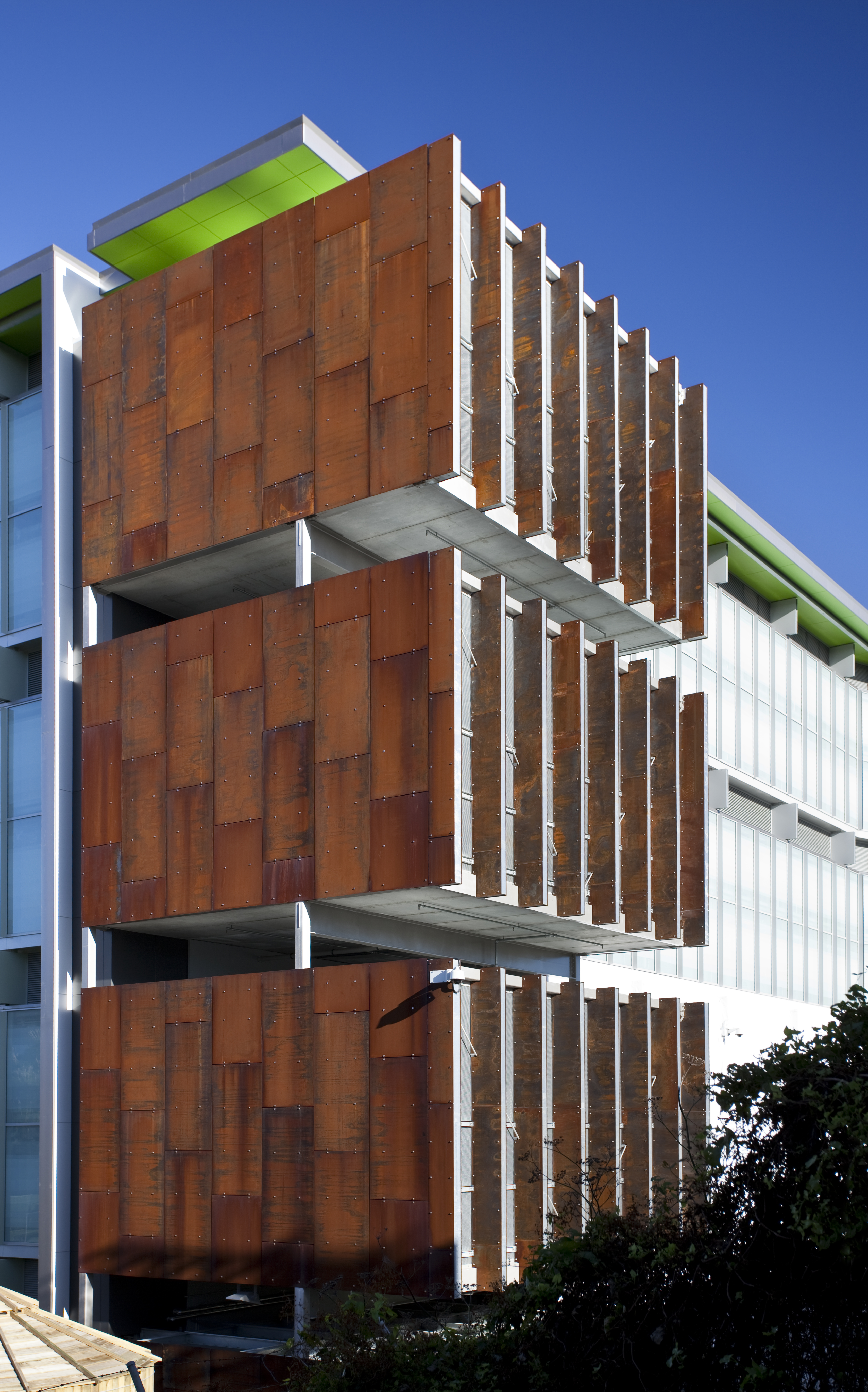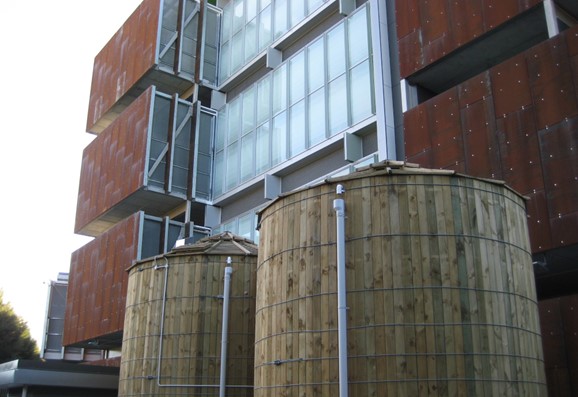Mt Eden Corrections Facility
- Architecture
- Engineering
- Lighting
The new Mt Eden Prison incorporates the best of modern prison features and environmentally sustainable design while safeguarding an important landmark.
The small site presented the planners and architects with several safety challenges and the design ensures a good fit with the surrounding buildings minimising the impact of two eight stories on site neighbors and views of Mt Eden (Maungawhau).
Preserving the Mt Eden building heritage features was a key part of the project. The 120 year old prison buildings were retired and restored for staff office use.
An innovative Twin Skin cladding system around accomodation buildings provides the level of security and privacy required while at the same time giving the appearance of commercial buildings. Glass and louvered exterior cladding wraps around an inner secure concrete exterior and ensure visual screening of prisoners in cells from neighbouring properties.
One of the driving forces in implementing ESD in the Mt Eden Corrections Facility redevelopment was the existing high water demand on Auckland’s infrastructure. The objective was to reduce the prison’s current and future consumption of council water while reducing the costs that come with it.
After examining and calculating Auckland’s rainfall patterns, a rainwater harvesting system was designed. The system consists of collecting rainwater off the new accommodation blocks’ roofs and sending it to stormwater harvesting storage tanks. The water collected has been used for toilet flushing which has reduced the buildings’ potable water consumption.
When running simulations using the daily rainfall records for Auckland, it was discovered that one storage tank would never fill to more than 60% while the tank for the other block would overflow 21 times over the course of a year. This was solved by installing a wet pipe between the tanks to balance these levels. This dropped overflows to only six a year, resulting in 97% of rainwater being reused.
The system collects an estimated 2.5 to 3 million litres per annum. In addition to water conservation, the rainwater harvesting has also lowered costs.

